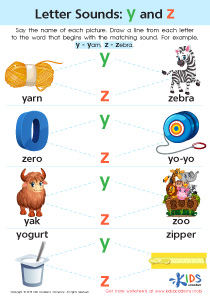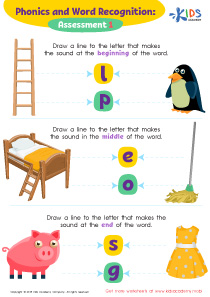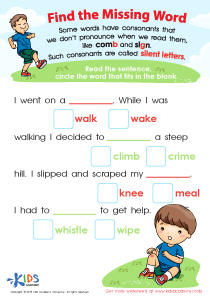Reading Improvement Normal Vowels Worksheets for Ages 4-7
5 filtered results
-
From - To
Discover our engaging "Reading Improvement Normal Vowels Worksheets" designed specifically for children ages 4-7. These expertly crafted worksheets focus on helping young learners identify, pronounce, and read the vowels A, E, I, O, and U. With fun activities and illustrations, these resources motivate children to practice and enhance their reading skills, ensuring a solid foundation for literacy development. Perfect for both classroom and at-home learning, our worksheets support early reading success and confidence. Explore our collection to provide your child with the tools needed to master vowel sounds and improve their reading abilities today!
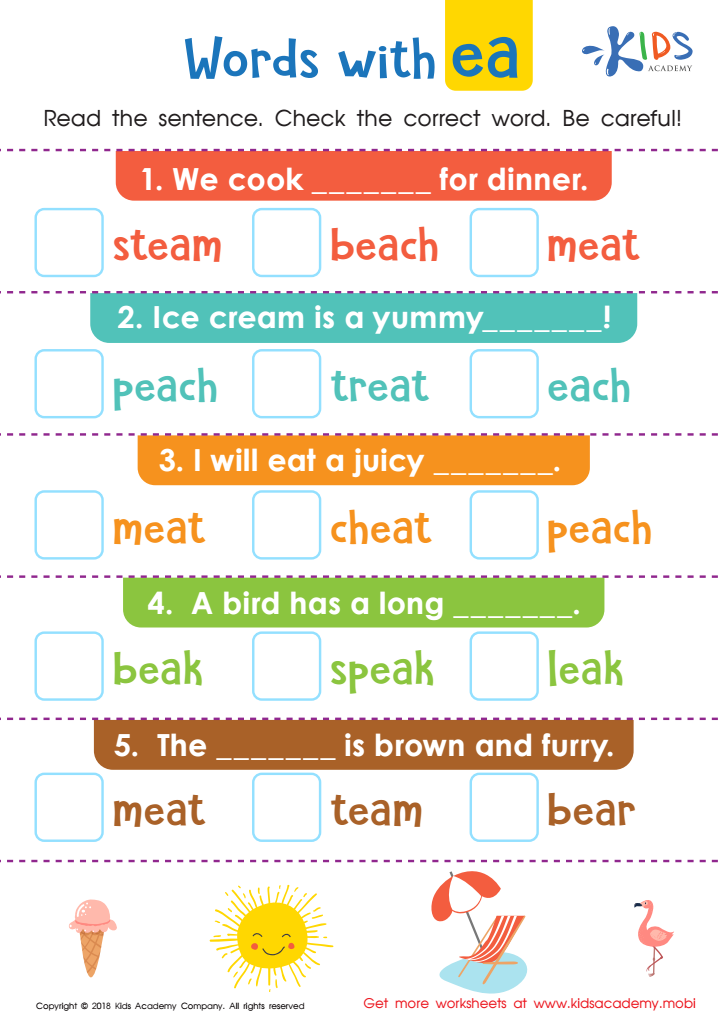

Words with ea Worksheet
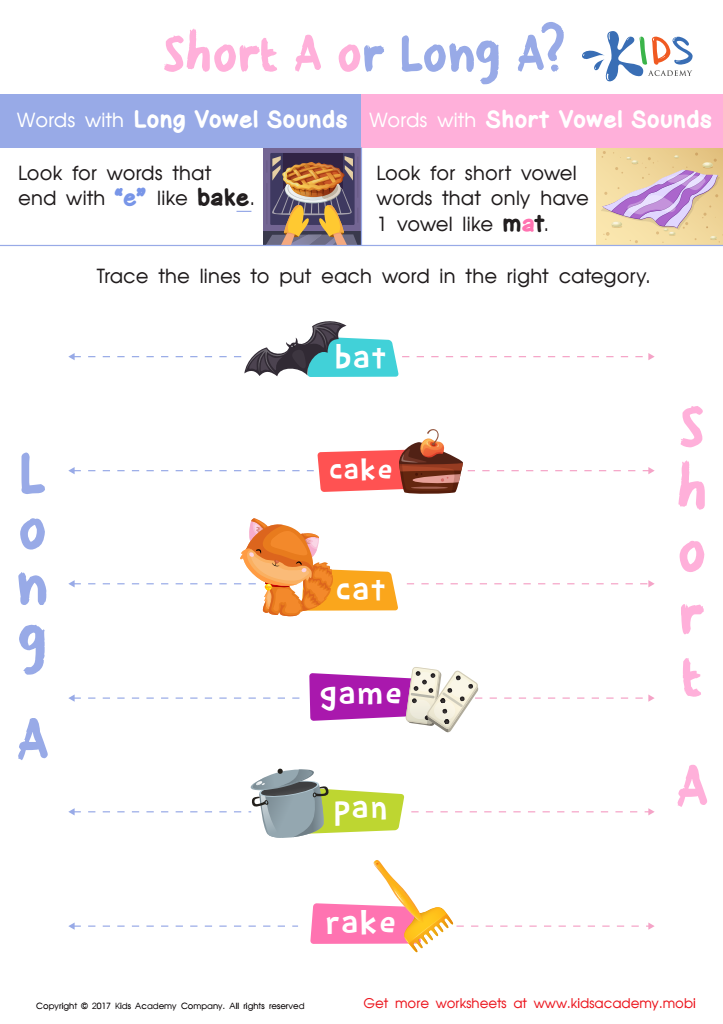

Short /a/ or Long /a/? Worksheet
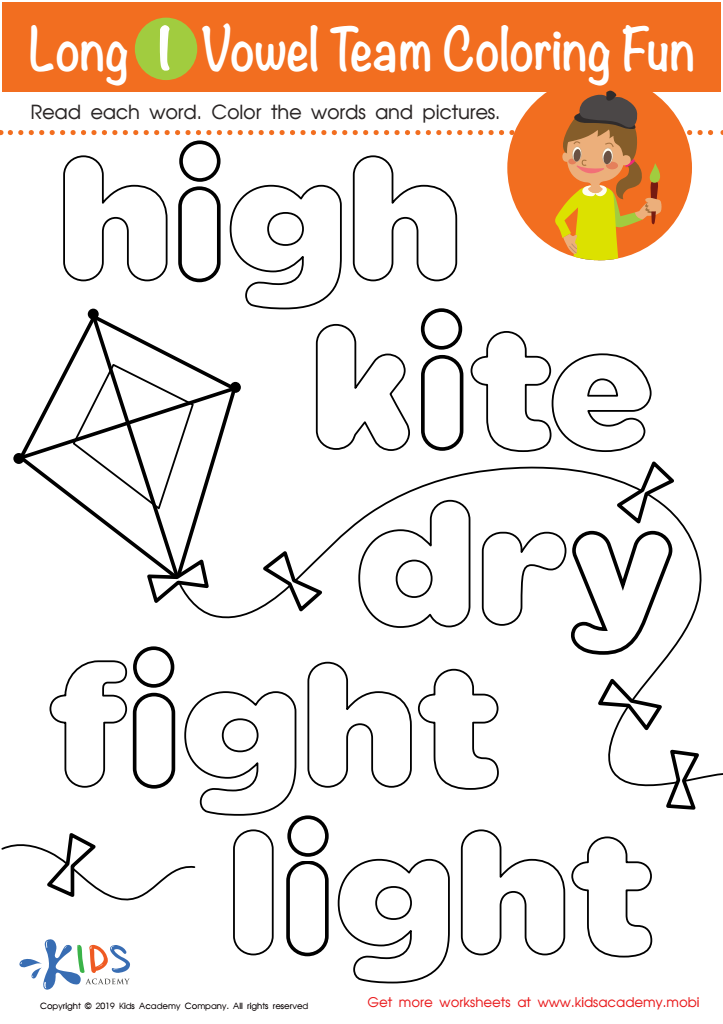

Long I Vowel Team Coloring Worksheet
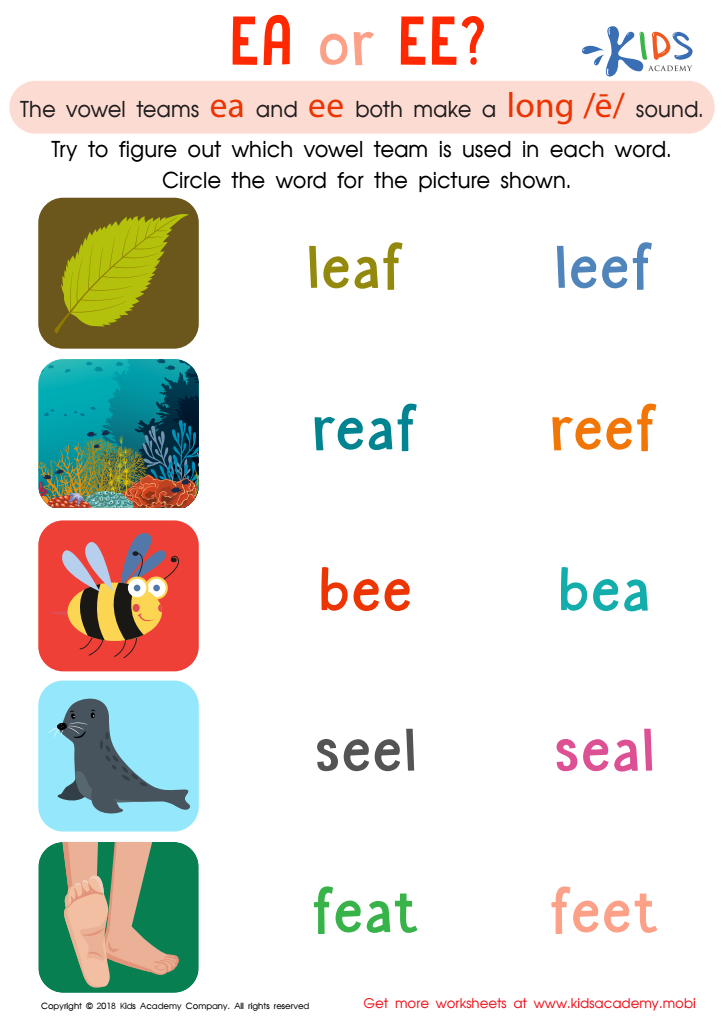

Reading: EA and EE Worksheet
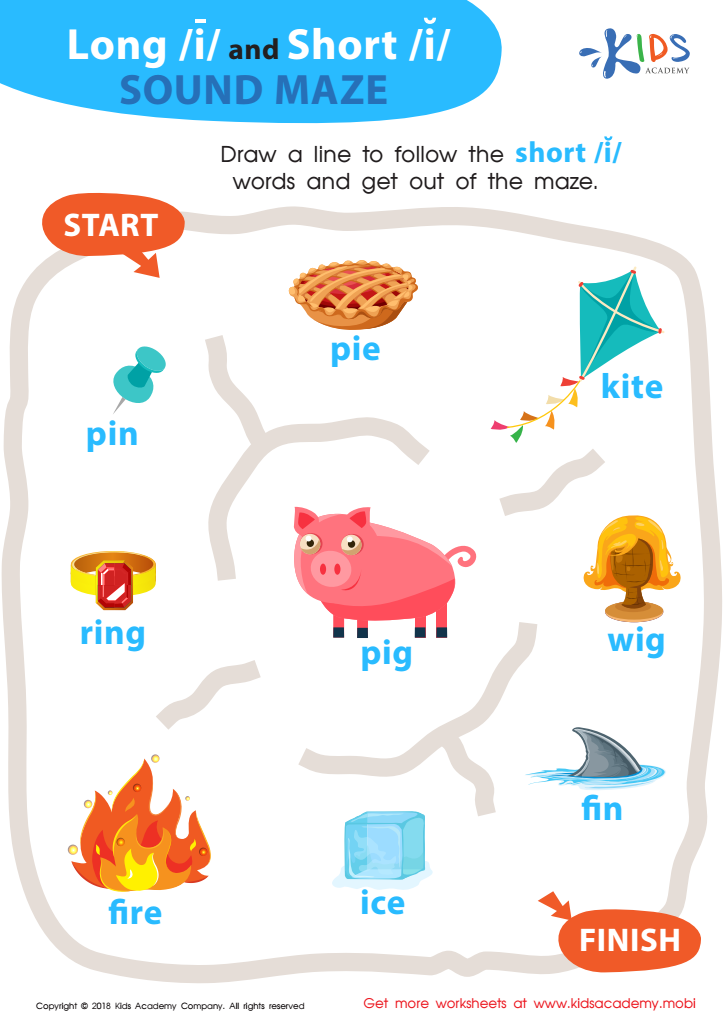

Reading: Long I and Short I Sound Maze Worksheet
Parents and teachers should prioritize Reading Improvement Normal Vowels for children ages 4-7 because early proficiency in vowel sounds is foundational to literacy development. At this critical stage, children are in the process of decoding words, recognizing patterns, and learning how to read fluently. Vowels serve as the core of syllables; understanding them helps children in blending sounds to form words accurately. Mastery of normal vowel sounds aids in building phonemic awareness, which is crucial for distinguishing between similar-sounding words, enhancing both reading and spelling skills.
Quality vowel instruction supports vocabulary expansion, comprehension, and the ability to tackle more complex texts as children progress in their education. It minimizes the risk of reading difficulties down the road, fostering confidence and a positive attitude towards reading. Additionally, literacy skills are closely tied to academic success in all subject areas, making early intervention immensely impactful.
By emphatically supporting vowel recognition and usage as a part of comprehensive literacy training, parents and teachers can help young learners develop a strong reading foundation. This enables a smoother transition to more advanced reading stages, setting them up for overall academic achievement and lifelong learning. Conclusively, investing in reading improvement helps nurture capable, confident readers who are equipped for future educational challenges.
 Assign to My Students
Assign to My Students





